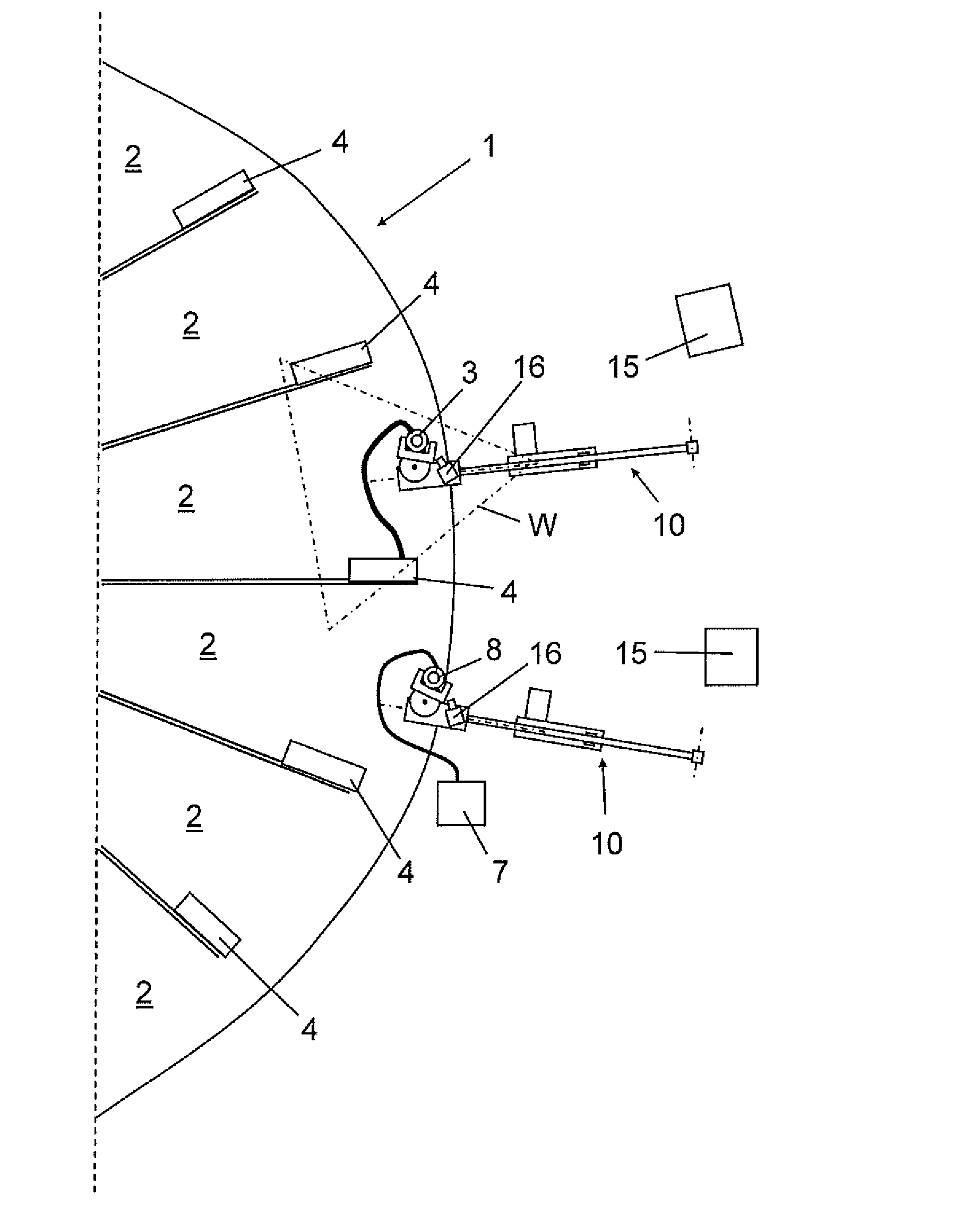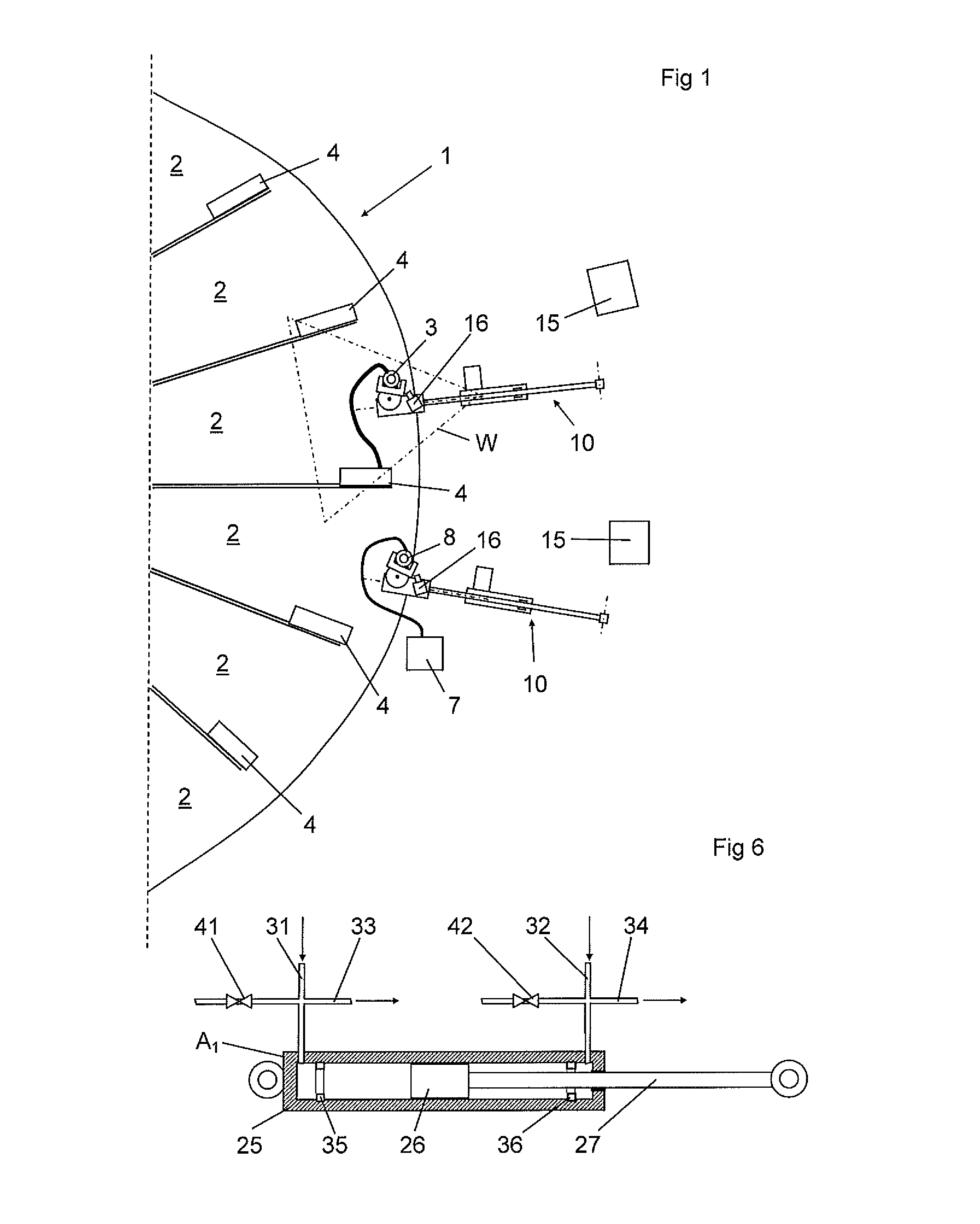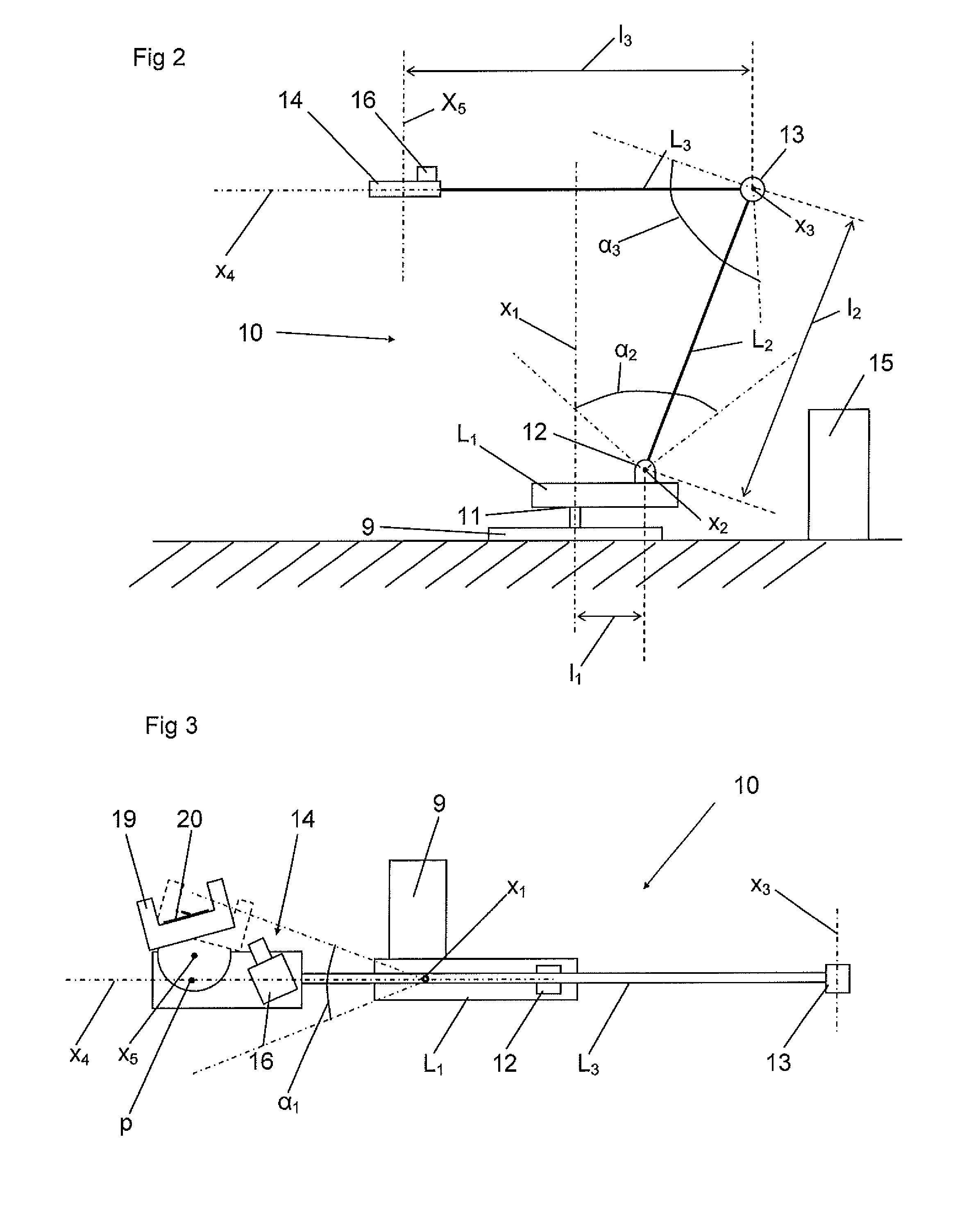Milking robot, and a milking arrangement
a technology of milking robots and milking trays, which is applied in the field of milking robots, can solve the problems of industrial robots that can run out of control, unsafe, and singularities, and achieve the effects of simple, inexpensive and light design, and proper accuracy
- Summary
- Abstract
- Description
- Claims
- Application Information
AI Technical Summary
Benefits of technology
Problems solved by technology
Method used
Image
Examples
first embodiment
[0037]The configuration of the milking robot 10 is now to be explained more closely with reference to FIGS. 2-6. As can be seen the milking robot 10 is a three link robot with three axes, and comprises a first link L1, a second link L2 and a third link L3. The first link L1 is attached to a base member 9 and rotatable around a first axis x1 to a first angle within a first angle range α1 via a first joint 11 by means of a first joint actuator A1. The second link L2 is attached to the first link L1 and rotatable around a second axis x2 to a second angle within a second angle range α2 via a second joint 12 by means of a second joint actuator A2. The third link L3 is attached to the second link L2 and rotatable around the third axis x3 to a third angle within a third angle range α3 via a third joint 13 by means of a third joint actuator A3. The base member 9 may be mounted on the ground.
[0038]The first link L1 is rotatable around the first axis x1 within the first angle range α1 with re...
second embodiment
[0056]As can be seen in FIGS. 7 and 8, the first link L1 is thus attached to a base member 9 and rotatable around a first axis x1 to a first angle within a first angle range α1 via a first joint 11 by means of a first joint actuator A1, disclosed in FIGS. 9 and 10. In the second embodiment, the first axis x1 extends horizontally or substantially horizontally.
[0057]The second link L2 is attached to the first link L1 and rotatable around a second axis x2 to a second angle within a second angle range α2 via a second joint 12 by means of a second joint actuator A2, disclosed in FIGS. 9 and 10. In the second embodiment, the second axis x2 extends horizontally or substantially horizontally.
[0058]The third link L3 is attached to the second link L2 and rotatable around the third axis x3 to a third angle within a third angle range α3 via a third joint 13 by means of a third joint actuator A3, disclosed in FIGS. 9 and 10 In the second embodiment, the third axis x3 extends vertically or substa...
PUM
 Login to View More
Login to View More Abstract
Description
Claims
Application Information
 Login to View More
Login to View More - R&D
- Intellectual Property
- Life Sciences
- Materials
- Tech Scout
- Unparalleled Data Quality
- Higher Quality Content
- 60% Fewer Hallucinations
Browse by: Latest US Patents, China's latest patents, Technical Efficacy Thesaurus, Application Domain, Technology Topic, Popular Technical Reports.
© 2025 PatSnap. All rights reserved.Legal|Privacy policy|Modern Slavery Act Transparency Statement|Sitemap|About US| Contact US: help@patsnap.com



